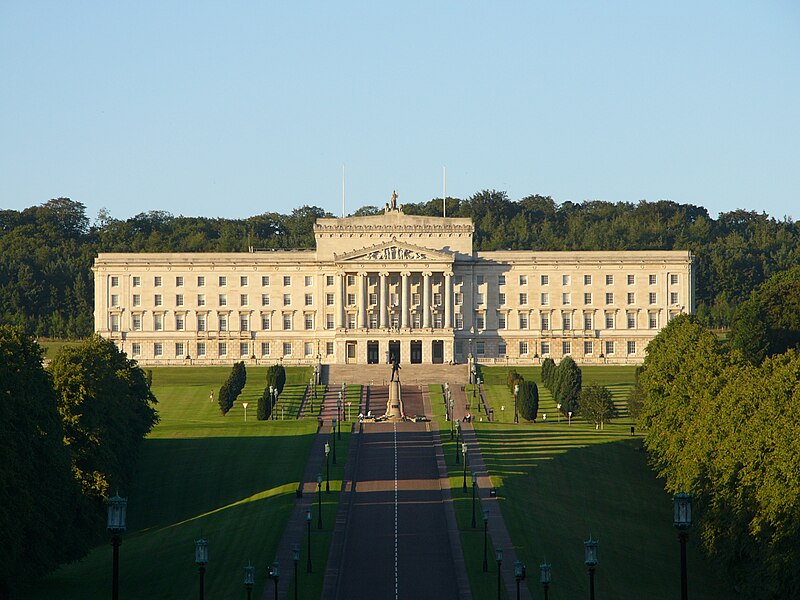Looking at the map of County Antrim to the north of
Whitehead you will notice what looks like a lobster claw stretching northwards
to just across the way from Larne and almost enclosing Larne Lough. This is the peninsula known as Islandmagee, a
strip of land characterised by quiet villages and beautiful coastline inhabited
by seabirds such as Kittiwakes and Guillemots.
The eastern coast of Islandmagee is the most dramatic, since
it faces onto the Irish Sea. In 1902 a
local civil engineer, Dean Berkeley Wise, opened The Gobbins Cliff Path, stretching
for nearly 3 miles and following the line of the limestone Gobbin cliffs, over
200 feet high in places. The path
became an instant hit with tourists but fell into disrepair during World War
II. Now there is a Visitor Centre where
supervised cliff walks can be booked, with safety helmets provided. The walk, as well as being spectacular in
itself, offers wonderful views across the sea to Scotland. Would-be visitors reading this during this
month of December should note that the path is now closed until April 2018.
At the northeastern end of the peninsula, near the village
of Mullaghboy, is the delightfully named Portmuck, reached by a steep, twisting road. Do not be put off by the name though, as this
is a beautiful spot with a bijou little harbour sporting lovely views of
the Antrim coast. The National Trust,
who manage this stretch of coast, have come up with a couple of walking trails
for visitors to enjoy. For further
information follow this link. A tombolo,
or sandbar, links the peninsula to Muck Island, although access is forbidden due to it being a nature reserve. Portmuck used to be the haunt of smugglers, and a reminder of this time is a 'horse cave' where smugglers used to hide their horses. At the northernmost tip of Islandmagee is Skernaghan Point, which can be approached via a walking trail.
 |
The Gobbins - Islandmagee, Northern Ireland, UK - August 24, 2017 - 04. Photo by Giorgio Galeotti, via Wikimedia Commons.
|





